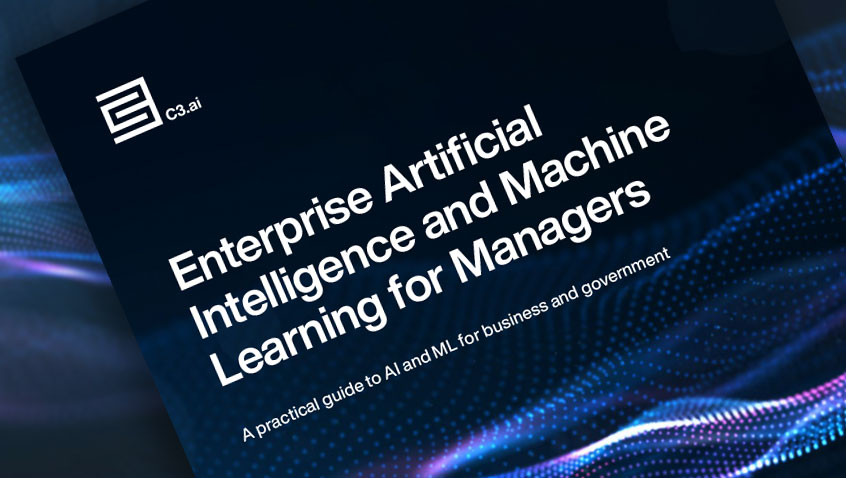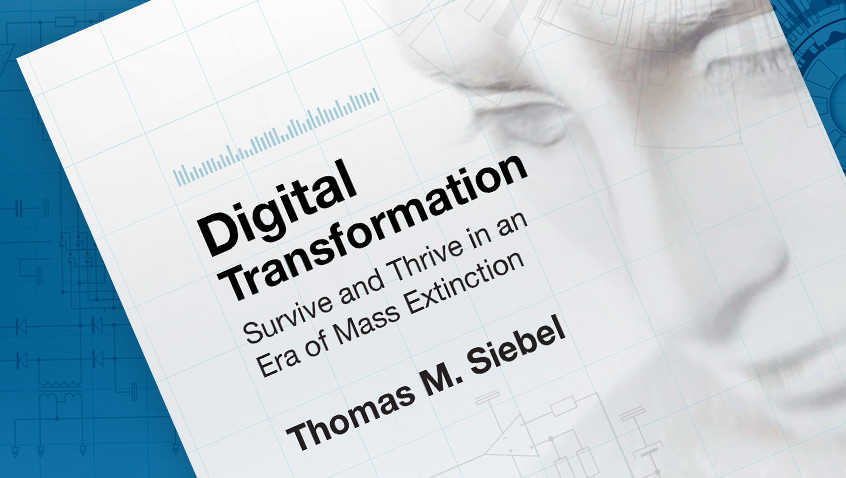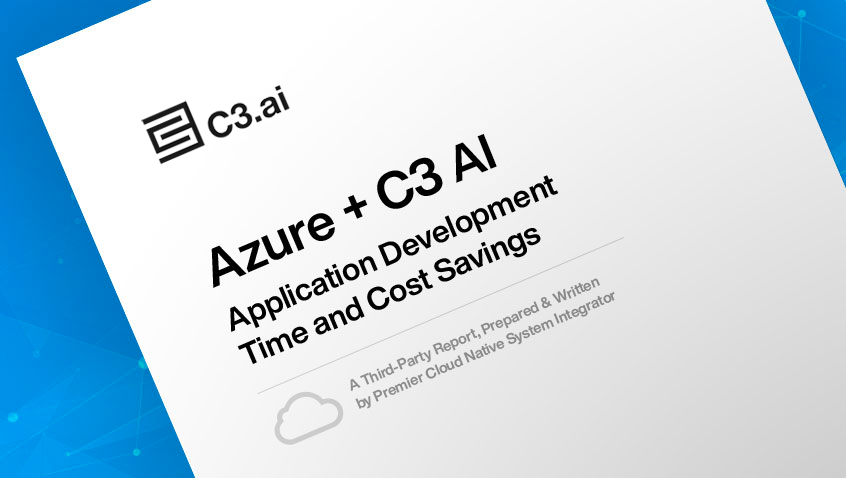- AI Software
- C3 AI Applications
- C3 AI Applications Overview
- C3 AI Anti-Money Laundering
- C3 AI Cash Management
- C3 AI Contested Logistics
- C3 AI CRM
- C3 AI Decision Advantage
- C3 AI Demand Forecasting
- C3 AI Energy Management
- C3 AI ESG
- C3 AI Health
- C3 AI Intelligence Analysis
- C3 AI Inventory Optimization
- C3 AI Process Optimization
- C3 AI Production Schedule Optimization
- C3 AI Property Appraisal
- C3 AI Readiness
- C3 AI Reliability
- C3 AI Smart Lending
- C3 AI Supply Network Risk
- C3 AI Turnaround Optimization
- C3 Generative AI Constituent Services
- C3 Law Enforcement
- C3 Agentic AI Platform
- C3 Generative AI
- Get Started with a C3 AI Pilot
- Industries
- Customers
- Events
- Resources
- Generative AI for Business
- Generative AI for Business
- C3 Generative AI: How Is It Unique?
- Reimagining the Enterprise with AI
- What To Consider When Using Generative AI
- Why Generative AI Is ‘Like the Internet Circa 1996’
- Can the Generative AI Hallucination Problem be Overcome?
- Transforming Healthcare Operations with Generative AI
- Data Avalanche to Strategic Advantage: Generative AI in Supply Chains
- Supply Chains for a Dangerous World: ‘Flexible, Resilient, Powered by AI’
- LLMs Pose Major Security Risks, Serving As ‘Attack Vectors’
- What Is Enterprise AI?
- Machine Learning
- Introduction
- What is Machine Learning?
- Tuning a Machine Learning Model
- Evaluating Model Performance
- Runtimes and Compute Requirements
- Selecting the Right AI/ML Problems
- Best Practices in Prototyping
- Best Practices in Ongoing Operations
- Building a Strong Team
- About the Author
- References
- Download eBook
- All Resources
- Publications
- Customer Viewpoints
- Blog
- Glossary
- Developer Portal
- Generative AI for Business
- News
- Company
- Contact Us
Glossary
- Artificial Intelligence
- AI Agents
- AI in Finance
- AI in Manufacturing
- Anomaly Detection
- Anti-Money Laundering
- Asset Performance Management
- Asset Reliability
- Demand Forecasting
- Digital Disruption
- Digital Transformation
- Digital Twin
- Elastic Cloud Computing
- Energy Management
- Enterprise AI
- Enterprise AI Platform
- Ethical AI
- Inventory Planning
- IoT Platform
- Know Your Customer (KYC)
- Machine Vision (Computer Vision)
- Model-Driven Architecture
- Multi-Cloud
- No Code
- Predictive Analytics
- Predictive Maintenance
- Process Optimization
- Production Scheduling
- Stochastic Optimization
- Supply Chain Management
- Type System
- Data Unification & Management
- Machine Learning (A to L)
- Artificial General Intelligence
- Bias
- Canonical Schema
- Canonical Transform
- Classification
- Classifier
- Classifier Performance
- Clustering
- Coefficient of Discrimination, R-Squared (R2)
- Convolutional Neural Network (CNN)
- Correlation
- Data Cleansing
- Data Labels
- Data Lineage
- Deep Learning
- Dimensionality Reduction
- Explainable AI
- F1 Score
- False Positive Rate
- Feature Engineering
- Feedback Loop
- Field Validation
- Gaussian Mixture Model (GMM)
- Generalized Linear Models
- Gradient-Boosted Decision Trees (GBDT)
- Features
- Ground Truth
- Holdout Data
- Hyperparameters
- Information Leakage
- LIME: Local Interpretable Model-Agnostic Explanations
- Linear Regression
- Loss Function
- Low-Dimensional Representation
- Machine Learning (M to Z)
- Mean Absolute Error
- Mean Absolute Percent Error
- Machine Learning Pipeline
- Model Drift
- Model Prototyping
- Model Training
- Model Validation
- Normalization
- Overfitting
- Precision
- Problem Tractability
- Random Forest
- Recall
- Receiver Operating Characteristic (ROC) Curve
- Regression Performance
- Regularization
- Reinforcement Learning
- Reporting Bias
- Ridge Regression
- Root Mean Square Error (RMSE)
- Selection Bias
- Shapley Values
- Supervised Machine Learning
- Tree-Based Models
- Underfitting
- Unsupervised Machine Learning
- XGBoost
Canonical Schema
What is a Canonical Schema?
Canonical schema is a data model that translates between different data formats. This approach usually is used to abstract away the underlying complexities of specific implementation formats to focus on a common, high-level format. After mappings are created from each implementation to the common data model, applications based on that model are insulated from changes or variations in the underlying data sources, simplifying application development and maintenance.
Why is a Canonical Schema Important?
A canonical schema provides the basis for a model-driven architecture, which enterprises can use to create a common architecture for developing scalable, integrated applications spanning multiple functions and processes within their organization. Instead of having to maintain every single connection between every data source (D) and application (A) – potentially a D times A number of connections – developers can use the common data model to reduce the number of connections to D plus A. Adding new data sources and applications requires much less effort and time using the common data model.
How C3 AI Enables Organizations to Leverage Canonical Schemas
C3 AI provides a complete, end-to-end, scalable platform based on a model-driven architecture – the C3 AI® Platform – that takes full advantage of the benefits of a canonical schema to enable designing, developing, deploying, and operating enterprise AI applications at industrial scale. With the C3 AI Platform, organizations can accelerate development of these applications on cloud platforms such as AWS and Azure 25-fold and deploy them in one-tenth the time of other approaches. Because of C3 AI’s revolutionary model-driven architecture, applications developed with the C3 AI Platform can run on any cloud with little or no change to the application code.
C3 AI also delivers a portfolio of prebuilt, SaaS enterprise AI applications for a growing number of use cases such as C3 AI Reliability, C3 AI Inventory Optimization, C3 AI Fraud Detection, and C3 AI Anti-Money Laundering. Some of the world’s largest organizations – including Shell, the US Department of Defense, and Koch Industries – use C3 AI technology to drive digital transformation initiatives that significantly reduce costs, increase asset availability and reliability, improve human safety, and enhance customer satisfaction. These applications run out of the box on the leading cloud platforms. A C3 AI application can be configured to take advantage of microservices available from different cloud providers – for example, AWS’s image recognition can be combined with Google’s natural language processing in the same application.



